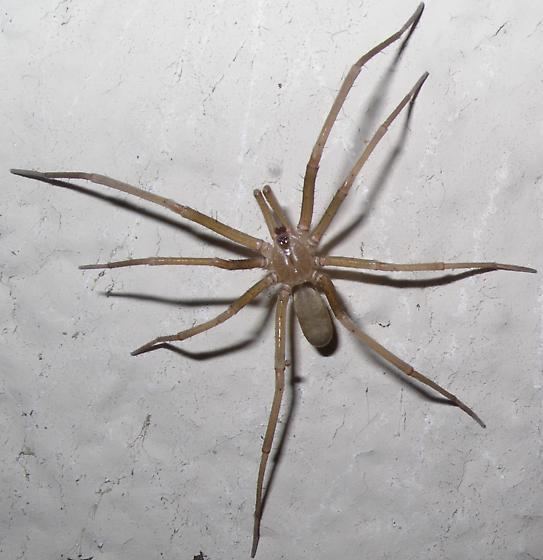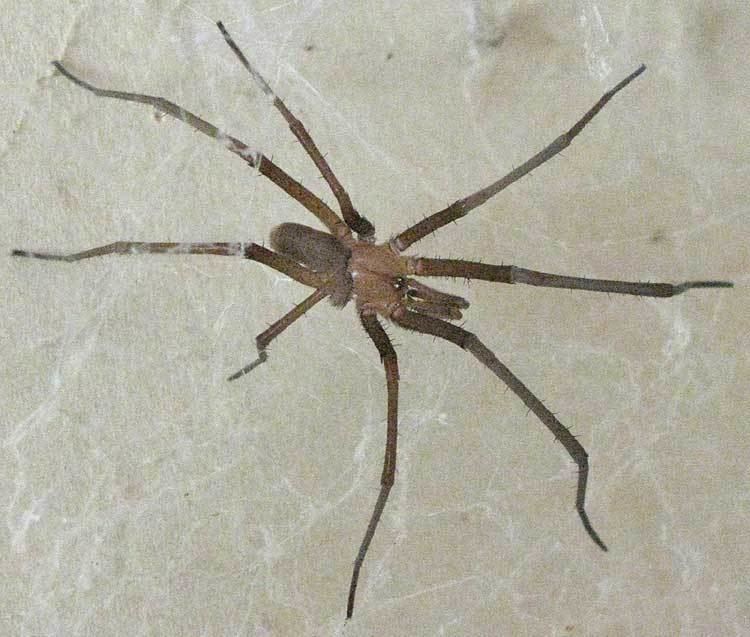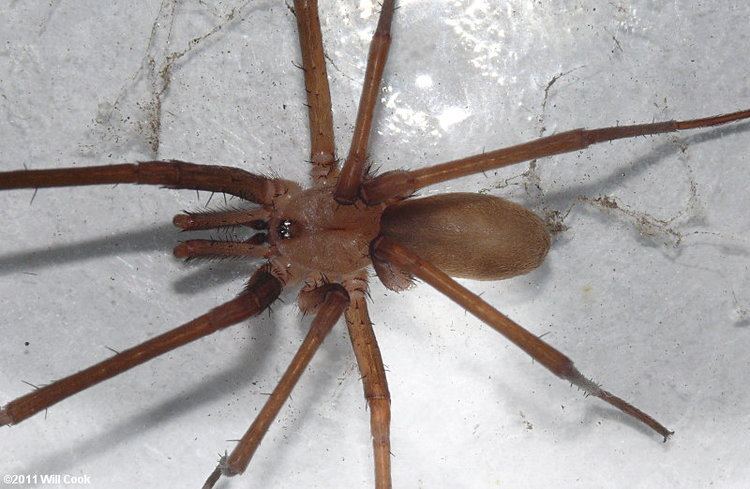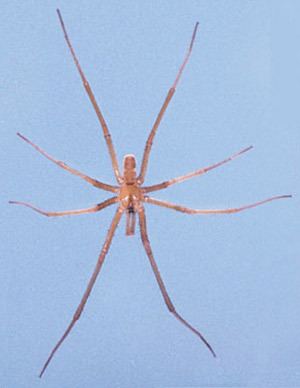Order Araneae Family Filistatidae Rank Species | Genus Kukulcania Higher classification Kukulcania | |
 | ||
Similar Kukulcania, Crevice weaver, Arachnid, Black house spider, Parasteatoda tepidariorum | ||
Identifying southern house spiders male and female
The Southern house spider (Kukulcania hibernalis) is a species of large spider from the Americas which exhibit strong sexual dimorphism. They occur in Southern North American states of USA, throughout Central America and some Caribbean to Southern Brazil and Uruguay. The males may be mistaken for brown recluses because the two have similar coloration and body structure. However, compared to the brown recluse, male southern house spiders are typically larger in size, lack the distinctive violin shape on their cephalothorax, and have unusually long slender pedipalps. The females are dark brown or black and more compact. Both sexes may grow to be roughly 2 inches (5.1 cm) across (legs extended), with the males typically having longer legs, and the females often having larger, bulbous bodies. The abdomen of the southern house spider is covered with fine velvety light gray hair.
Contents
- Identifying southern house spiders male and female
- Handling a kukulcania hibernalis southern house spider
- Reproduction
- References

Female southern house spiders are rarely seen, as they build radial webs around crevices, for which reason their family (Filistatidae) is called crevice weavers. Females seldom move except to capture prey caught in their webs. Males, on the other hand, typically wander in search of insects and females to mate with, having no particular territory.

The southern house spider is a cribellate spider. That is, its spinnerets do not produce adhesive webbing. Instead, to capture prey the spider uses its legs to comb webbing across its cribellum, a spiked plate near the spinnerets. This combing action frays and tangles the strands, producing a fine, velcro-like netting that ensnares insect legs.

Male southern house spiders sometimes appear aggressive, but they do not bite unless trapped, and their mouthparts are too small to easily penetrate human skin. They do, however, have an unnerving tendency to crawl across anything in their path regardless of whether it is alive. This is not aggression; these spiders are simply nearly blind and cannot see larger animals. Indeed, these spiders instinctively play dead if they feel threatened (a tactic which is effective against their common predators).

Southern house spiders are capable of crawling through crevices as narrow as 1/4 in (0.66 cm) due to their elongated bodies and compact legs.

Handling a kukulcania hibernalis southern house spider
Reproduction
The southern house spider mating ritual is a lengthy (over an hour) and elaborate process with long periods during which neither the male nor the female moves considerably. When the wandering male encounters a female's web, there may be an initial confrontation where each scares the other. Upon recovering, the male then constructs a large web around the female's crevice. When this web is complete, the male pulls on its strands continuously to draw the female out of her hole, which may take several minutes. Following her emergence, each spider will tap at the other in an effort to grasp the other by the forelegs, with the male remaining suspended in his web.

